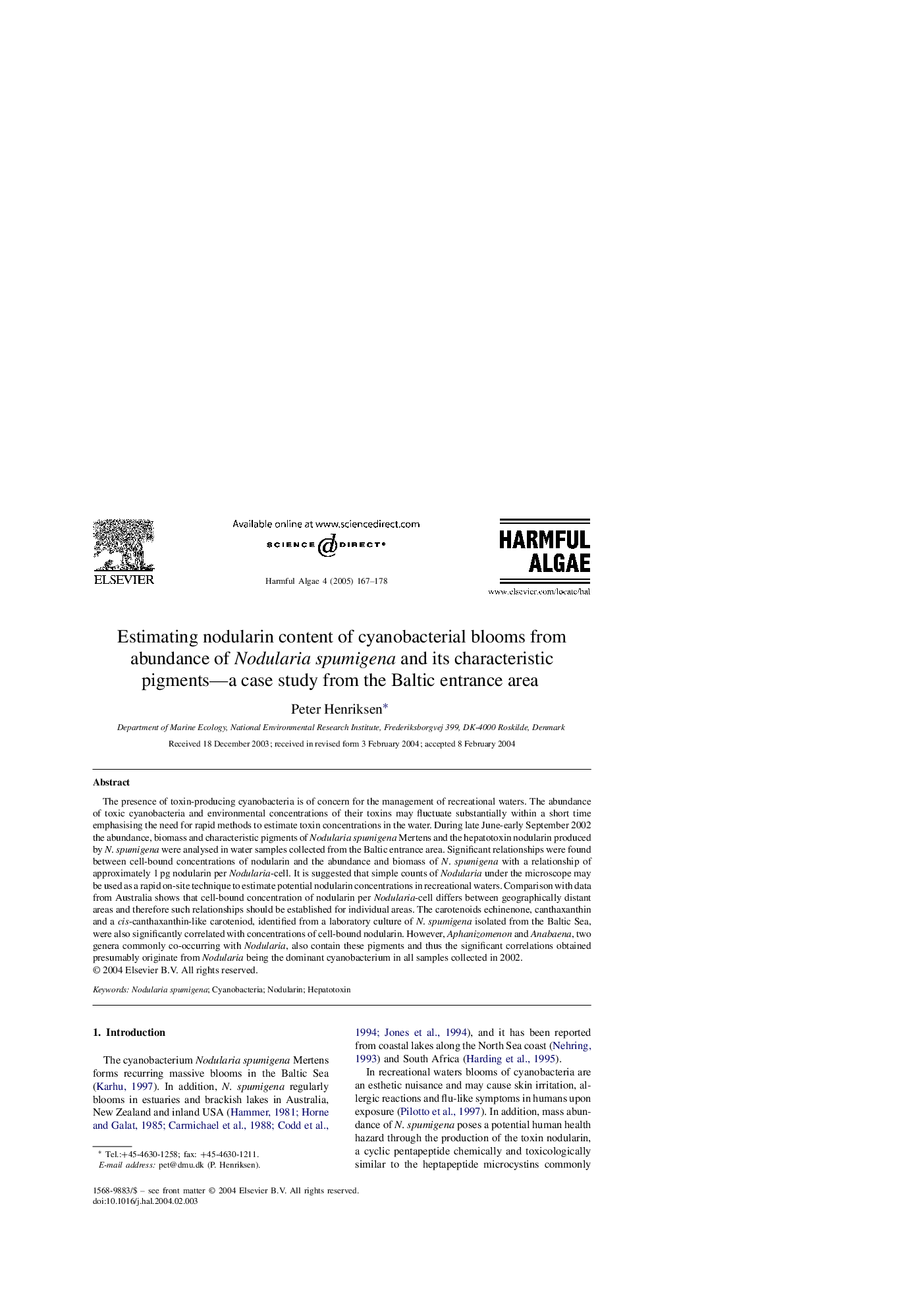| کد مقاله | کد نشریه | سال انتشار | مقاله انگلیسی | نسخه تمام متن |
|---|---|---|---|---|
| 9482745 | 1327515 | 2005 | 12 صفحه PDF | دانلود رایگان |
عنوان انگلیسی مقاله ISI
Estimating nodularin content of cyanobacterial blooms from abundance of Nodularia spumigena and its characteristic pigments-a case study from the Baltic entrance area
دانلود مقاله + سفارش ترجمه
دانلود مقاله ISI انگلیسی
رایگان برای ایرانیان
کلمات کلیدی
موضوعات مرتبط
علوم زیستی و بیوفناوری
علوم کشاورزی و بیولوژیک
علوم آبزیان
پیش نمایش صفحه اول مقاله

چکیده انگلیسی
The presence of toxin-producing cyanobacteria is of concern for the management of recreational waters. The abundance of toxic cyanobacteria and environmental concentrations of their toxins may fluctuate substantially within a short time emphasising the need for rapid methods to estimate toxin concentrations in the water. During late June-early September 2002 the abundance, biomass and characteristic pigments of Nodularia spumigena Mertens and the hepatotoxin nodularin produced by N. spumigena were analysed in water samples collected from the Baltic entrance area. Significant relationships were found between cell-bound concentrations of nodularin and the abundance and biomass of N. spumigena with a relationship of approximately 1Â pg nodularin per Nodularia-cell. It is suggested that simple counts of Nodularia under the microscope may be used as a rapid on-site technique to estimate potential nodularin concentrations in recreational waters. Comparison with data from Australia shows that cell-bound concentration of nodularin per Nodularia-cell differs between geographically distant areas and therefore such relationships should be established for individual areas. The carotenoids echinenone, canthaxanthin and a cis-canthaxanthin-like caroteniod, identified from a laboratory culture of N. spumigena isolated from the Baltic Sea, were also significantly correlated with concentrations of cell-bound nodularin. However, Aphanizomenon and Anabaena, two genera commonly co-occurring with Nodularia, also contain these pigments and thus the significant correlations obtained presumably originate from Nodularia being the dominant cyanobacterium in all samples collected in 2002.
ناشر
Database: Elsevier - ScienceDirect (ساینس دایرکت)
Journal: Harmful Algae - Volume 4, Issue 1, January 2005, Pages 167-178
Journal: Harmful Algae - Volume 4, Issue 1, January 2005, Pages 167-178
نویسندگان
Peter Henriksen,